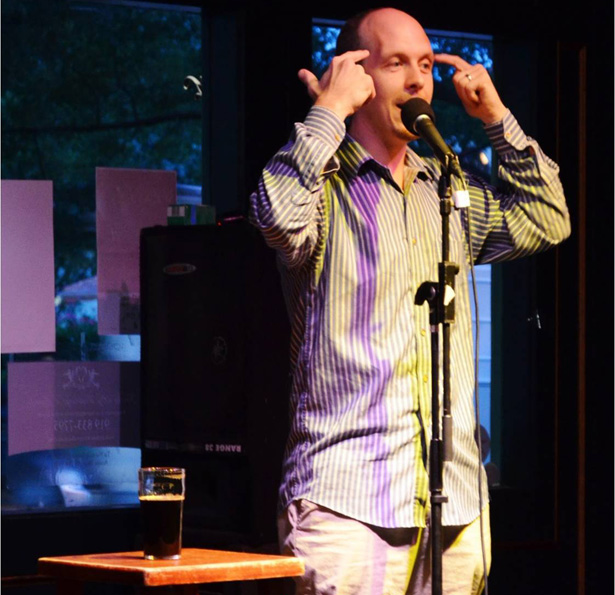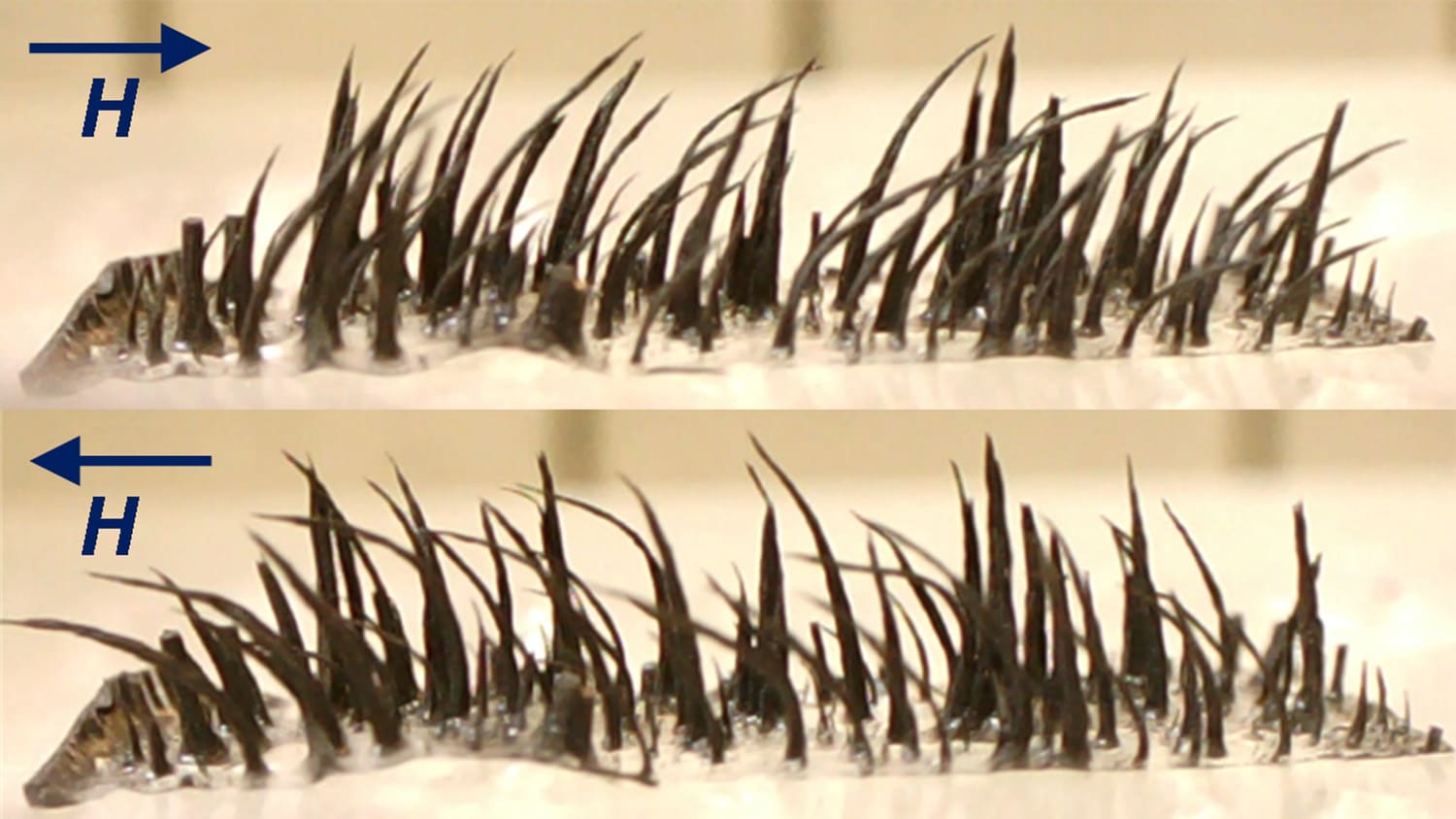Public Engagement and Science Communication at NC State

Editor’s note: This is a guest post by Nicolas Canete, an international student from Paraguay who recently earned his master’s degree in communication at NC State.
Most NC State researchers are involved in some form of public engagement when it comes to science communication, but that public engagement takes a variety of forms. I know this because my master’s thesis work was the first exploratory survey study to investigate different aspects of scientists’ views of and participation in public engagement (PE) activities at NC State.
According to the survey, nine out of 10 researchers at NC State participated in at least one public engagement activity in the past year, and giving public talks is the most common (and preferred) type of interaction with non-experts.
I also learned that NC State researchers believe public engagement is fun, will make them better communicators, and will benefit their careers. But they are largely unaware of institutional policies and infrastructure regarding public communication of science.
In the study, PE refers to researchers communicating about their research or areas of expertise with non-expert audiences. Survey participants were drawn from a random sample of researchers working at NC State, including research assistants (masters and Ph.D. students), postdocs, and professors. A total of 404 researchers participated, and the margin of sampling error was plus or minus 4.67 percent. This post summarizes my main findings and the importance of the project. A report containing a more detailed review of the results is available here.
Level of participation

Results show that scientists overwhelmingly hold a positive attitude towards communicating with non-specialists. Around 80 to 90 percent of surveyed researchers like the idea of taking part in PE activities, and 87 percent of participants took part in at least one type of communication activity in the past 12 months. However, most of the researchers didn’t take part in these PE activities very often.
Men, professors, and those in the social and agricultural sciences are the most active in science communication. Among male researchers, 90 percent were active in public communication in the last year, compared to 83 percent of female researchers. Regarding their career status, just 6 percent of professors reported being inactive, compared to 20 percent of research assistants and 21 percent of postdocs. In addition, almost half of professors (46 percent) indicated participation in five or more types of PE activities, compared to 25 percent and 21 percent of those in lower career stages. Finally, those in the social and agricultural sciences were the most active communicators, with 46 percent and 48 percent of them (respectively) reporting participation in five or more types of PE activities.
I also investigated which forms of PE researchers were most likely to engage in. For instance, between 40 and 50 percent of researchers took part in the most common interactions: giving a public talk to non-experts, participating in a university open house day, and interacting with non-specialist publics in a science fair outside the university. The least frequent were serving as a guide in a science museum, speaking in a debate about a science issue, being interviewed on a TV program, and being interviewed on a radio show, all of which were performed by just 10 to 20 percent of respondents.
In a world that spends an increasing amount of time online and on social media, it is interesting to note that 64 percent of researchers at NC State declared themselves not active in online social networks, at least for the purpose of communicating about their research to non-expert audiences. An additional look at researchers’ use of social media for public engagement can be found here.
A matter of preferences
Asked the question, “If given the choice, how willing would you be to…” participate in 14 different PE activities, researchers indicated that giving a public talk to non-experts, advising or collaborating with policy makers, writing for popular audiences, being interviewed by newspapers or magazines, and talking to children and teenagers in schools are the top five preferred communication activities, with 78 to 85 percent of participants indicating willingness to participate. It’s not clear why there’s a disconnect between the types of activities researchers prefer and the types of activities they actually engage in, although this may be linked to the collaborative nature of some preferred activities requiring an invitation from organizations outside the university.
Which activities are the least preferred? Among the least favorite types of interactions, participants mentioned being a guide in a science center or museum, speaking in a public hearing or debate on science issues, and being interviewed on a TV program/news. Between 35 and 47 percent of respondents were unwilling to take part in these activities.
PE is helpful, fun and strategic for careers
Researchers’ attitudes and behavior toward various forms of PE are generally influenced by certain beliefs about the relevant type of engagement. Among the potential positive outcomes or advantages associated with public communication of science, 83 percent and 78 percent of scientists, respectively, agree that PE helps them to improve communication and teaching skills, as well as gives them a broader perspective on society. Moreover, 60 percent agree that engaging with the general public is fun, and 50 percent indicate agreement about the notion that PE helps them progress in their scientific careers and enhances their social reputation.
Regarding potential barriers or adverse outcomes, 52 percent of researchers see themselves not having time to do PE and 35 percent think engagement could result in their getting caught up in public controversies. Remarkably, most scientists reject the notion that the scientific community looks down on those involved in public communication, the so-called “Carl Sagan effect,” named after the astrophysicist who was denied membership in the U.S. National Academy of Sciences. Around three out of four researchers (73 to 76 percent) disagree with the belief that talking to the public will negatively affect their image in front of their colleagues, reject the idea that doing public engagement is for those less capable of doing research, and disagree that is impossible to do research well and also engage with non-experts.
Unawareness of institutional approach to PE
The study also found that there is a high level of unawareness regarding the existence of incentives and organizational structures (at the college level) that may facilitate scientists’ participation in PE. In other words, there is a high percentage of “don’t know” answers to questions about the presence of PE in the mission statement (50 percent), the existence of a communication/PR office (32 percent), that they don’t need approval to talk to the media (60 percent), whether their college allocates time for PE (53 percent), and whether their college rewards participation in PE (58 percent).
The survey also included questions about views of and participation in science communication training, intention to participate in PE, workload and source of funding. Additionally, the master’s thesis portion of the project consisted of a hypothesis-driven, explanatory study completed based on these data, which analyzed the factors that influences scientists’ participation in PE. A public report of the study is available here, and the master’s thesis here.
So what?
As the natural producers of scientific and technical knowledge, scientists and engineers play an important role in communicating about their research and areas of expertise with non-expert audiences such as journalists, students in schools, online audiences, and policy makers. Effective science communication can contribute to more informed societal decisions, as science and technology permeate almost every aspect of our lives. Knowing how researchers think and behave concerning public communication can be meaningful to stimulate better public engagement with science and technology.
In the last decade, academic scholars and think tankers have produced not only public opinion studies on different topics in science and emerging technologies, but also started to do more research on the perception of scientists regarding their participation in outreach and engagement activities. Some relevant and recent work of university researchers can be found here, here, here, here, and here. Furthermore, the American Association for the Advancement of Science has been discussing the topic as well as started to implement regular surveys on scientists’ views of the public and science communication among their associates.
Outreach and engagement are elements of what is considered the “third mission” of universities, which usually receives less attention than research and teaching, whether as a topic of research or as part of institutional strategies.
In its “Pathway to the Future – NC State University Strategic Plan 2011-2020,” Chancellor Randy Woodson envisioned a more pre-eminent and recognized technological research university. Beyond investments in quality teaching and innovative research, part of the strategy to reach that goal is to become a more engaged science institution. This means that the research culture that characterizes NC State must also permeate society, disseminating knowledge beyond campus and academic circles.
Public communication and engagement on the part of scientists will play an important role in helping to implement this aspect of the university’s strategy, and the results of this should contribute to that work.
- Categories:


